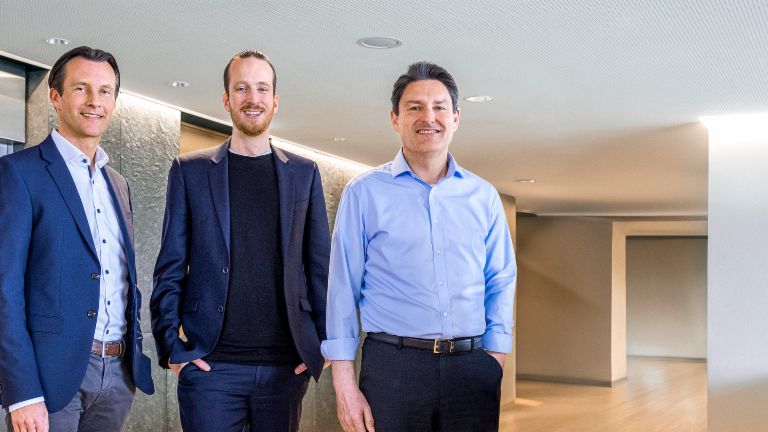Don't lose your nerves: What you need to know about buying debt in Central and Eastern Europe.
The global financial crisis and the ensuing recession have completely changed the European NPL market: Central and Eastern European countries are now trading hotspots, with even more growth predicted for 2018. EOS Director Marwin Ramcke explains his strategy for success in this highly cyclical market.
After a lending boom, the global crisis struck.
“The strong growth in trade we’re seeing is driven as much by market conditions as it is by strategy,” says Ramcke. “Or, to put it a better way, it’s driven by our strategic flexibility to exploit markets opportunities.” After a lending boom in the CEE region, the financial crisis struck in 2007 and 2008. It was quickly apparent that banks in CEE would end up with many, many NPLs – and more secured than non-secured, as mortgages are generally bigger than personal loans.
“Financial institutions with loans that are in trouble can always delay the day of reckoning a little bit, but at some point, NPLs have to be declared and accounting provisions made,” says Ramcke. Between 2008 and 2013, NPLs as a percentage of gross loans rose from around 3 percent to about 17 percent in Hungary and Bulgaria and to 20 in Romania – midway between Germany, at a little over 2 percent, and Greece, which saw NPLs rise to 35 percent of all loans.
Marwin Ramcke makes no bones about his ambitions for Eastern European financial markets. The EOS Group board member recalls the company had only just nudged into the Eastern European non-performing loan (NPL) market when he joined in 2007. “80 percent of earnings were from Germany,” he says. “But within the next years, I expect only a third of earnings to come from there – and another third each from Western and Eastern Europe.”
Since taking responsibility for Central and Eastern Europe (CEE) last year, Ramcke has driven forward another important step-change for EOS on Europe’s eastern flank. Having established itself as a market-leader in unsecured debt purchases (personal loans, credit-card obligations) in most of the 15 countries, EOS in 2016 bought its first packages of distressed secured debt (residential and commercial mortgages). Under Ramcke’s aegis, others have followed.
Earnings from CEEC expected to double.
EOS now manages distressed mortgages in Romania, Bulgaria, Macedonia, Croatia, Serbia, Hungary, Slovakia, Czech Republic and Poland – nine of the company’s 15 CEE markets. “We want to continue buying distressed debt in all of these markets,” says Ramcke. “And over the next two years, I really do expect we’ll be managing unsecured and secured debt in all 15 of these CEE countries.” He even says more countries could be added to that list, if the right opportunities arise.
In the 2016-2017 financial year, EOS bought Eastern European debt with a nominal value of EUR 1.8 billion, one third of EOS’s total nominal purchases, and more than double the nominal value acquired in CEE the previous financial year. Annual sales in the region rose almost 20 percent to EUR 131.1 million in 2016-2017, just over a fifth of EOS Group’s total sales. And as-yet-unpublished figures are said to show CEE earnings before taxes (EBT) doubled in 2017-2018.
Pressure from the European Union helped to get the market going.
“At the same time, interest rates declined and ever more international investment funds were looking to invest in distressed debt in Eastern Europe in the hope of securing good returns,” he continues. “Add pressure on the NPL-holding banks from the European Central Bank and other regulators, and at some point sellers decided to sell and buyers were finally able to buy.“ The market in secured NPLs really got going in 2015 and 2016 in CEE.
“When the Eastern European banks started selling secured NPLs, we were able to react extremely quickly to get a slice of that new market,” says Ramcke. “We had 10 years of experience in trading secured NPL in Germany and unlike many other players interested in the secured NPL market EOS was already present in 15 CEE countries for many years and knew the legal framework very well. In addition we knew how to manage debtors thanks to our non-secured business, and we knew many of the banks now selling secured NPLs as clients from the unsecured NPL market.”
Why asset-backed debt is harder to handle.
For all the overlaps between Ramcke’s non-secured and secured NPL business, he and his staff did have to adjust to big differences. With secured NPLs, the valuations are more difficult or at least more expensive, as you’re talking about individual real-estate projects, which you have to analyse,” he says. “Unsecured NPLs are usually packages of many thousands loans, much smaller in volume, on which you can use statistical analysis – due diligence is much easier.”
After the first secured NPL-deals in Croatia and Romania in 2016, EOS set up the NPL Transaction Centre at headquarters in Hamburg, a centralised service to help CEE country operations value and then managed collateralised NPLs.
On top of that, fintech-innovations like EOS’ debt collection software Kollekto Plus and its Centre of Analytics help its Eastern European employees manage debtors and their repayment schedules, both for unsecured and secured NPLs.
Some traders appear desperate to move into NPL.
“The NPL-market is highly cyclical and every market is at a slightly different stage in the cycle of over-lending and having banks tidy up their loan books,” says Ramcke. “That’s why it’s good to be so diversified geographically.” In the near-term, he sees potential buying opportunities in economies like Hungary and Croatia – although he does worry that the competition between international investors to secure NPLs remains intense thanks to low rates.
“The key in finance is to stay disciplined, to know at what point an investment won’t provide the kind of returns you need,” says Ramcke. '”It’s important not to lose your nerve when you don’t win an auction or two.” He says the pressure to invest has seen funds pay extremely high prices for distressed debt. And he sees working for a family-owned company like the Otto Group as very useful – his targets are 'sustainable' and not tied to eternally recurring financial quarters.
“What’s surprised me the most about doing business in CEE is the confidence – or overconfidence – of some international funds when pricing NPLs,” he says. Some appeared desperate to secure NPLs at any cost or risk in a hunt for returns, as interest rates remain low. “We’ll see who was wrong and who was right after the next financial markets crisis.”
Explore more from EOS



